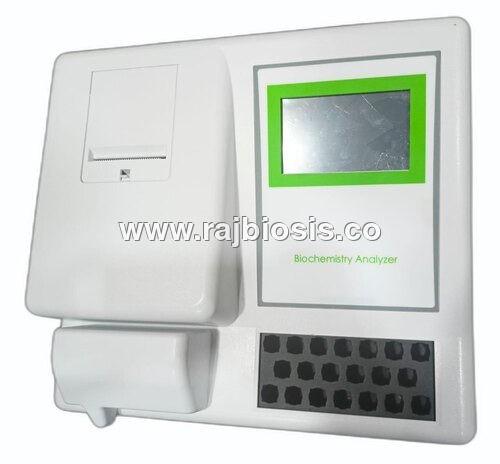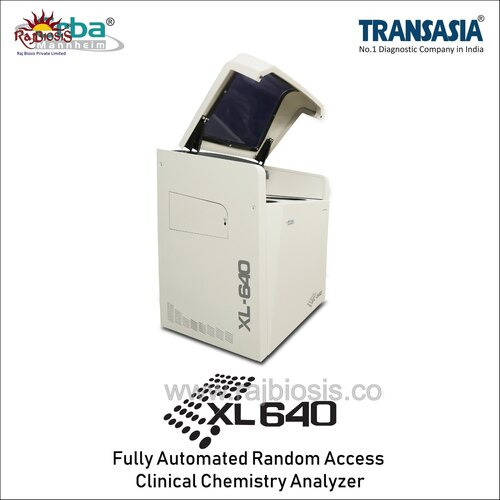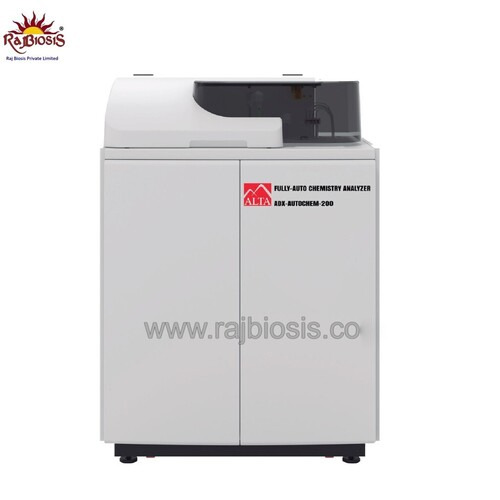 08045816368
08045816368

Semi Automatic Biochemistry Analyzer
Product Details:
Semi Automatic Biochemistry Analyzer Price And Quantity
- 1 Piece
- 65000 INR/Piece
Semi Automatic Biochemistry Analyzer Trade Information
- JAIPUR
- Cash Advance (CA), Telegraphic Transfer (T/T), Cash in Advance (CID)
- 10 Days
- Contact us for information regarding our sample policy
- Standard
- All India
Product Description
A semi-automatic biochemistry analyzer is a laboratory instrument used for analyzing biochemical samples. Unlike fully automatic analyzers, which can perform a wide range of tests with minimal human intervention, semi-automatic analyzers require some manual steps and operator involvement in the testing process. These instruments are commonly used in smaller laboratories, clinics, or research facilities where the testing volume may not justify the cost or complexity of a fully automated system.
Here are some key features and components commonly found in semi-automatic biochemistry analyzers:
1. Sample Handling:
Samples are typically loaded manually by the operator.
Some analyzers may have sample racks or trays that can hold multiple samples for batch processing.
2. Reagent Handling:
Reagents are often pre-packaged and loaded manually by the operator.
Reagent volumes and mixing may require manual adjustment.
3. Instrumentation:
The analyzer includes optical or electrochemical modules for measuring various analytes in the samples.
Light sources, detectors, and sensors are used for specific assays.
4. User Interface:
Typically includes a user-friendly interface for programming test parameters, entering sample information, and monitoring the analysis.
Some may have touchscreen displays or simple keypad interfaces.
5. Testing Procedures:
The operator follows a predefined protocol for each test.
The analyzer may guide the user through the steps or require manual initiation of specific procedures.
6. Data Output:
Results are usually displayed on the instrument's screen.
Some analyzers may have the capability to print or export results for further analysis.
7. Maintenance:
Regular maintenance, calibration, and quality control checks are often required to ensure accurate and reliable results.
Semi-automatic analyzers are suitable for laboratories with moderate testing needs or those focusing on specific sets of tests. They provide a balance between automation and operator control, allowing for flexibility and cost-effectiveness in smaller settings. It's important for operators to follow proper procedures to maintain the accuracy and reliability of the analytical results.
Semi-automatic Biochemistry Analyzer Specifications:
1. Reading Cuvette: Direct
2. Aspiration Volume: 200 µl “ 800 µl
3. Incubator: 20 incubating positions
4. Measuring System: Photometric Linearity: ±2% (03.000 O.D) / Photometric Accuracy: ±1% (03.000 O.D) / Carry-over: 1%
5. Drift: 0.005 O.D/hr
6. Quality Control: Excellent Q.C. function, Q.C. chart may be displayed and printed

Price:
- 50
- 100
- 200
- 250
- 500
- 1000+







 Send Inquiry
Send Inquiry Send SMS
Send SMS
